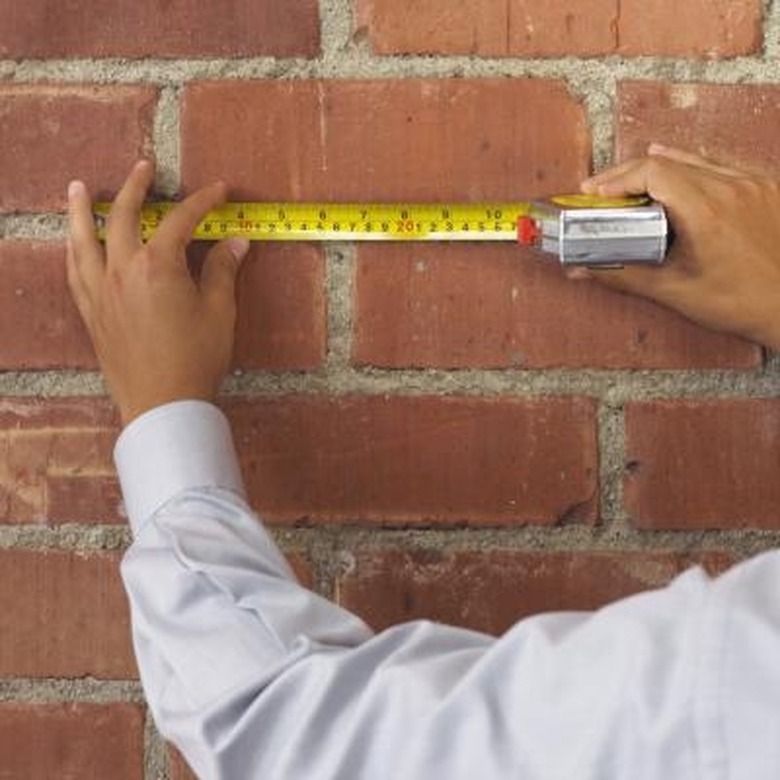How To Calculate How Many Bricks To Build A Wall
Things Needed
-
Tape measure
-
Calculator
Tip
Include finish bricks in your count, such as those that will be used to close the top or ends of the wall.
Don't include measurements for bricks where a door, window or other break in the brick sequence are planned in your calculations.
A wall built from brick not only adds security and strength to your property, it also provides a pleasing geometric backdrop for the landscaping. Because of the bricks' size and weight, homeowners generally arrange to have the amount needed for a large project delivered by the masonry company or lumberyard. Doing so requires that you estimate the number of bricks needed before placing the order.
Step 1
Measure the length and thickness of one of the bricks that will be used in the wall. A standard brick is 2-1/4 inches wide and 7-1/2 to 8 inches long. Add 1/2 inch to both the length and thickness to account for the mortar joint between adjacent bricks. For example, a brick that is 2-1/4 inches by 7-1/2 inches, plus mortar joints, will occupy 2 3/4 inches by 8 inches.
Step 2
Measure the length of the space for the wall and convert the number to inches. Divide the length in inches by the length of a brick plus mortar joint. For example, a wall 36 feet, 8 inches long is 440 inches long (36 X 12 = 432 + 8 = 440). Each course (single layer) of bricks will need 440 / 8 = 55 bricks.
Step 3
Determine the desired height of the wall in inches, and divide the height by the thickness of a brick and mortar joint. For example, a wall 72 inches tall requires 26.18 courses of 2-3/4-inch-wide bricks; rounded up to 27 courses.
Step 4
Multiply the number of bricks per course (55) by the number of courses (27) to obtain the number of bricks in a single-thickness wall or veneer. For our example, the number is 1,485 bricks. Double that number for a double-thickness wall. Bricklayers generally add 5 percent to the estimate to cover broken or wasted bricks, for about 1,560 bricks in this case.
